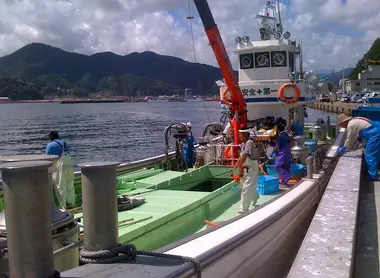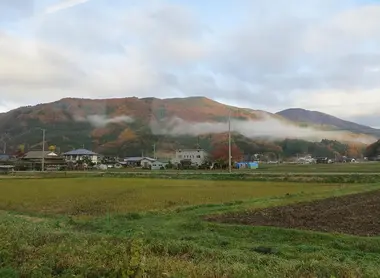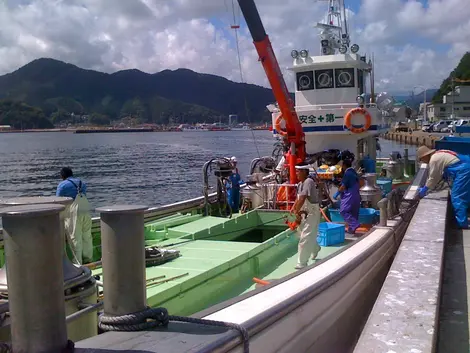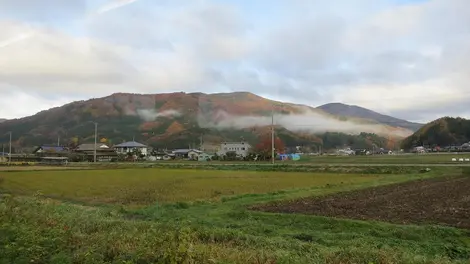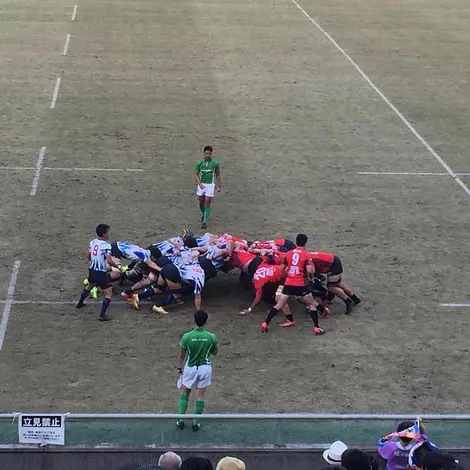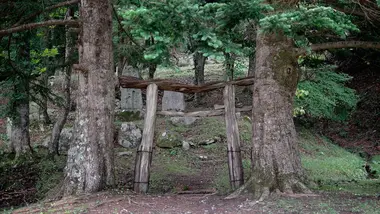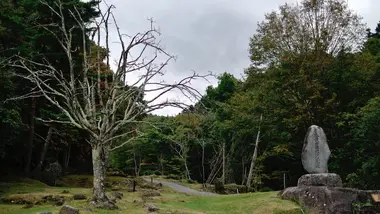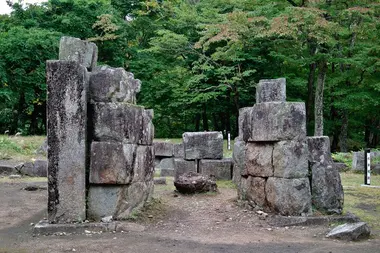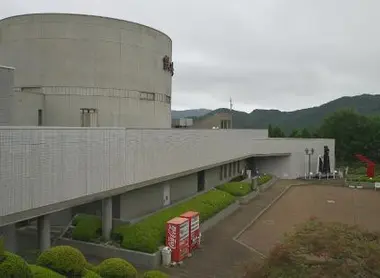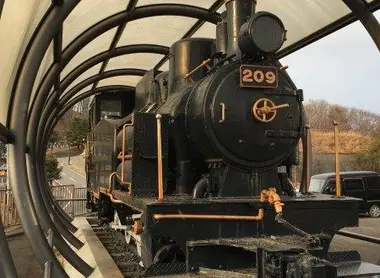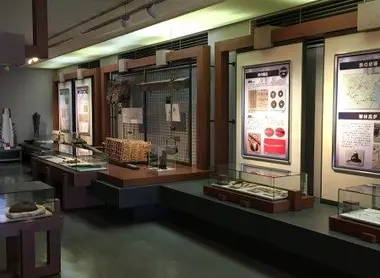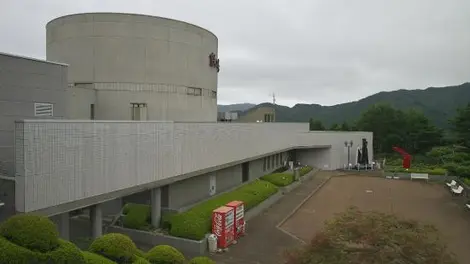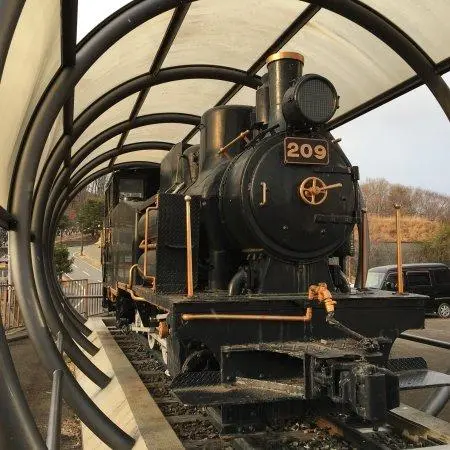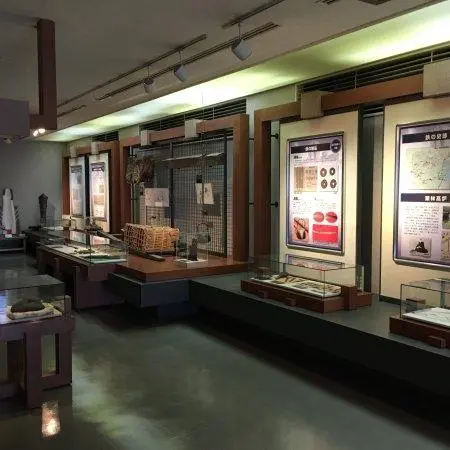Kamaishi, steel city 釜石市の鉄鋼業
- Published on : 09/04/2018
- by : Ph.L
- Youtube
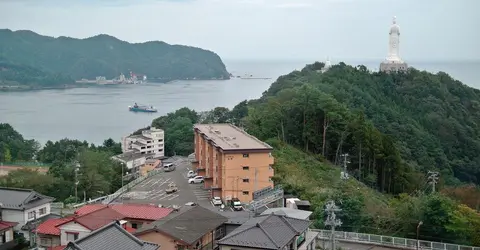
Kamaishi Village
Flick/ MIKI Yoshihito
The Cradle of Japan's Industrial Revolution
Located east of Iwate Prefecture, Kamaishi is one of 12 Japanese cities that will host the Rugby World Cup in 2019. If today the city is famous for its love of the oval ball, it is nevertheless the steel industry that has made his fame throughout the country. Discovery of this small town which propelled Japan into the industrial revolution.
Air gap and rugby
Located on the shores of the Pacific Ocean, the small town of Kamaishi has long remained a simple fishing village . Under the direction of the Nanbu clan, it did not at all attract the attention of the local lord who preferred more strategic cities like Morioka or Hachinoche where the wealth of the time was accumulating.
However, everything changed for Kamaishi at the end of the Edo period (1603-1868) and this small town, which was not predestined to shine on a national scale, quickly became the base of an entire industrial movement.
With the discovery of magnetite in the 18th century , a mineral rich in iron oxide, Lord Nanbu's interest turned to the small fishing village. Seeing an economic interest for the whole region, the lord then began the exploitation of iron and in 1857 ordered the construction of the first Western-style factory in the country .
More efficient than manual mining, mechanical mining is revolutionizing Japanese industrial production. Tons of iron are then produced in Kamaishi, until the government is challenged, which decides to invest in numerous local infrastructures from 1874: railway lines, development of an industrial port, the small fishing village is transformed and takes the lead. of the national steel market .
Kamaiship will thus prosper for almost a century, until the Second World War causes the decline of its industry already weakened by successive natural disasters.
In the 1950s, the Kamaishi steel industry made a new start: it took up sport!
The Nippon SteelCorporation , a local iron-producing company, now sponsors the Kamaishi rugby team which achieves very good results and wins the national championships from 1978 to 1984.
And although today the Nippon Steel Corporation has moved from Iwate Prefecture to Tokyo, the local rugby team is still thriving and is among the top national teams.
In the footsteps of the steel industry
Although today Kamaishi's industry has lost its luster, it is still possible to admire the remnants of its glorious past.
- The mines of Hashin
In operation from 1858 to 1894, the Hashino mines formed an industrial complex 3.5 km long. Classified as a UNESCO World Heritage Site since 2015, it is one of the few sites of the Meiji Industrial Revolution (1868-1912) that has survived to the present day. You can still see the blast furnaces that were used to transform iron, the railways used to transport minerals and of course, the rest of the mines that made Kamaishi famous.
Practical information : free admission, 9.30 a.m. to 4.30 p.m.
- Ohashi Mines
Much smaller than Hashino, this mining complex still preserves its blast furnaces . Located to the west of the city, the Ohashi mines are quite remote from Kamaishi. And although we do not recommend that you make it a crucial stopover in your stay in the surroundings, they can very well be the subject of a playful break during a walk in the forest .
Practical information: free entry.
See also: The silver mines of Iwami Ginzan
- The Iron Museum: Iron and Steel History Museum
Located near the coast of the city, this museum traces the history of the steel industry of Kamaishi . Very instructive, it also helps to understand the processes used to extract iron from magnetites and details all the steps necessary for its transformation.
Practical information : admission 500 yen (€3.80), 9 a.m. to 5 p.m. closed on Tuesdays.
More information on the 2019 World Cup and rugby in Japan:
- Rugby World Cup 2019 stadiums
- Nissan Stadium in Yokohama
- Rugby in Japan
- The Japanese Top League
- The Japan Rugby Team
- Rules of Rugby
- Positions on a Rugby field
- Follow the XV of France during the World Cup
